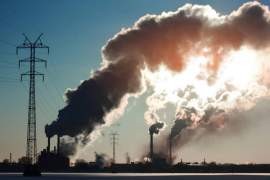
What Are Mobile Sources

The Mobile sources of air pollution are automobiles, planes, trains, and boats. If a vehicle or vessel is equipped with an internal combustion, jet, or diesel Engine, it contributes to air pollution. All motorized vehicles create pollution while the engine is turned on.
The greater contributor to air pollution are jet planes. The Airplane industry, airports, and pilots are first and foremost concerned with flight safety. However, environmental regulations are also important to the airplane industry.
Airplanes make the largest contribution to air pollution by generating tonnes of carbon dioxide, nitrogen oxide, and volatile organic compounds. Carbon dioxide is believed to be a major contributor to anthropogenic global warming. Nitrogen oxide also contributes to global warming; however, it is better known as the force behind smog.
Volatile organic compounds vary. Many VOCs are well-known carcinogenic substances. Planes burn tonnes and tonnes of fuel. In the United States, alone over 500 million miles were flown in 2008 alone. Airplanes are the least fuel efficient vehicles because they are constantly battling gravity and air resistance.
Air plan manufacturers have built planes faster and more efficient with the implementation of the jet engine after WWII. Commercial aviation exploded after the Jet engine made for safe and rapid travel. Propeller planes are equipped with diesel engines that make their own pollutants.
Diesel engines are extremely common. Many freight trains, boats, freight trucks, and personal vehicles are equipped with diesel engines. Older diesel engines produced thick plumes of black smoke. The benefit of diesel is that it burns fuel very slowly.
The EPA worked in collaboration with engine manufacturers to produce less pollution from diesel engines. The EPA has mandated clean burning diesel engines to be equipped on all cars and trucks manufactured after 2005. Diesel has become cleaner than it used to be but is still a big polluter. The trucking industry is the greater contributor to diesel related air pollution.
Regular Gasoline powered internal combustion engines are also major contributors to air pollution. Well over 90% of all personal vehicles have gasoline powered internal combustion engines. Their pollution is similar to that of diesel engines, without the nasty black cloud of smoke. Automobiles used to put lead into the air as pollution.
Lead poisoning causes infertility and permanent brain damage in small children. Lead used to be an additive in fuel. The Federal Clean Air Act banned the addition of lead to gasoline. By 1990, no on or off-road cars or trucks were able to run on leaded fuels. This legislation was mandated thanks to the invention of the catalytic converter. Prior to that invention lead was added to fuel to prevent engines from misfiring.
The catalytic converter served this purpose by regulating the flow of gas through the exhaust. The catalytic converter also reduced other air pollution significantly. Cars from before the late 1970s polluted more than newer cars. Modern cars still add pollutants like hydrocarbons, benzene, nitrogen oxides, sulphur dioxide, and carbon monooxide. Car pollution is responsible for the infamous could of haze that floats over the City of Los Angeles.
NEXT: What Are Stationary Sources




















